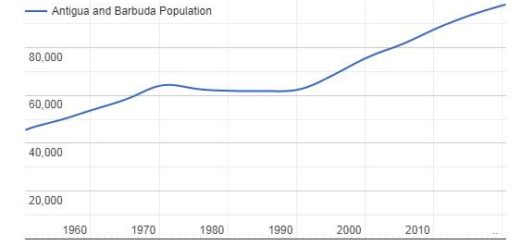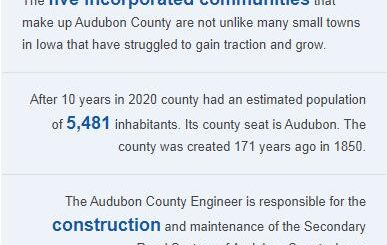St. Joseph, Missouri Weather by Month
According to climateforcities, St. Joseph, Missouri, experiences a diverse range of weather throughout the year, with distinct seasonal variations. The city’s climate is characterized by hot summers, cold winters, and moderate conditions during the spring and fall months. To provide a comprehensive overview of the weather in St. Joseph, let’s explore each month in detail.
January: Winter is in full swing in St. Joseph during January. The average high temperature hovers around 36°F (2°C), while the lows can drop to 17°F (-8°C). The city often sees snowfall during this month, contributing to a picturesque winter landscape. Residents and visitors can expect about 3 inches of snow on average. Additionally, January tends to be one of the drier months, with precipitation levels at a modest 1.2 inches.
February: Similar to January, February continues the winter chill in St. Joseph. The average high temperature remains cool at 41°F (5°C), and the lows linger around 21°F (-6°C). Snowfall is still a possibility, with an average of 2 inches throughout the month. Precipitation levels slightly increase compared to January, reaching around 1.4 inches. The winter weather persists, and residents often bundle up to navigate the colder temperatures.
March: As winter transitions to spring, March brings a gradual increase in temperatures. The average high temperature rises to 52°F (11°C), and the lows climb to 30°F (-1°C). While snowfall becomes less frequent, there’s still a chance of some winter precipitation. The city experiences an average of 2.2 inches of precipitation, which may include rain or lingering snow. As the days grow longer, signs of spring begin to emerge, with budding trees and the promise of warmer days ahead.
April: April marks the true onset of spring in St. Joseph. The average high temperature jumps to a more pleasant 64°F (18°C), and the lows increase to 40°F (4°C). The city experiences a significant drop in snowfall, and any lingering winter weather gives way to the arrival of spring showers. April sees an average precipitation of 3.5 inches, contributing to the greening of the landscape. Spring blooms start to appear, and outdoor activities become more appealing as the weather continues to improve.
May: May brings even milder weather to St. Joseph, with an average high temperature of 74°F (23°C) and lows around 51°F (11°C). Spring is in full swing, and the city experiences an increase in sunshine and longer daylight hours. May is one of the wetter months, with an average precipitation of 4.8 inches. However, the rain contributes to the vibrant growth of vegetation, and the city becomes a lush and colorful environment. Outdoor events and recreational activities become popular as residents and visitors take advantage of the pleasant weather.
June: Summer officially begins in June, and St. Joseph sees a notable increase in temperatures. The average high temperature reaches a comfortable 83°F (28°C), and the lows stay mild at 60°F (16°C). June is characterized by longer days, providing ample opportunities for outdoor activities and events. While precipitation levels remain relatively high at an average of 4 inches, the warmer temperatures make for enjoyable summer evenings. Residents and tourists alike engage in various outdoor pursuits, from picnics to festivals.
July: July is typically the warmest month in St. Joseph, with an average high temperature of 88°F (31°C) and lows around 66°F (19°C). Summer is in full swing, and residents seek relief from the heat by enjoying outdoor water activities or attending community events. July experiences an average precipitation of 3.8 inches, providing occasional relief from the summer heat. The city’s parks and recreational areas are bustling with people, and the vibrant atmosphere reflects the energy of the season.
August: As summer progresses into August, the temperatures in St. Joseph remain warm, with an average high of 86°F (30°C) and lows around 64°F (18°C). The city continues to experience occasional summer showers, with an average precipitation of 3.5 inches. August is a popular month for outdoor events and gatherings, as residents make the most of the remaining warm days before the arrival of fall. The landscape remains lush and green, and outdoor enthusiasts continue to explore the city’s parks and natural attractions.
September: September signals the transition from summer to fall in St. Joseph. The average high temperature begins to decline, reaching 77°F (25°C), while the lows drop to 54°F (12°C). The city experiences a decrease in precipitation, with an average of 3 inches. As fall foliage begins to make its appearance, September is an ideal time for outdoor activities like hiking and enjoying the changing colors of the landscape. Residents start to prepare for the cooler days ahead, and fall festivals become popular attractions.
October: Fall is in full swing in October, with a significant drop in temperatures. The average high reaches 65°F (18°C), and the lows dip to 42°F (6°C). The city experiences an increase in the intensity and frequency of fall foliage, creating a picturesque autumn landscape. October sees an average precipitation of 2 inches, with occasional crisp and clear days. Residents embrace the season by attending fall events, visiting pumpkin patches, and enjoying the beauty of nature’s transformation.
November: As St. Joseph moves further into fall, November brings cooler temperatures. The average high drops to 52°F (11°C), and the lows reach 31°F (-1°C). While snow becomes more likely, it is usually light, and the city experiences an average precipitation of 1.7 inches. November marks the beginning of the holiday season, and residents start to prepare for winter festivities. Indoor activities become more popular as people seek warmth and comfort during the cooler days.
December: Winter returns in full force in December, with the average high temperature plummeting to 40°F (4°C) and the lows reaching 20°F (-6°C). The city experiences an increase in snowfall, creating a festive and snowy atmosphere. December is one of the drier winter months, with an average precipitation of 1.3 inches. The holiday spirit is in the air, and residents celebrate the season with festive decorations, holiday markets, and community events. Despite the colder temperatures, December brings a sense of warmth and togetherness as the year comes to a close.
St. Joseph, Missouri, boasts a climate that reflects the beauty of all four seasons. From the snowy winters to the vibrant springs, the warm summers, and the colorful falls, each month contributes to the city’s dynamic weather patterns. Residents and visitors alike have the opportunity to enjoy a variety of outdoor activities throughout the year, making St. Joseph a diverse and inviting destination.



